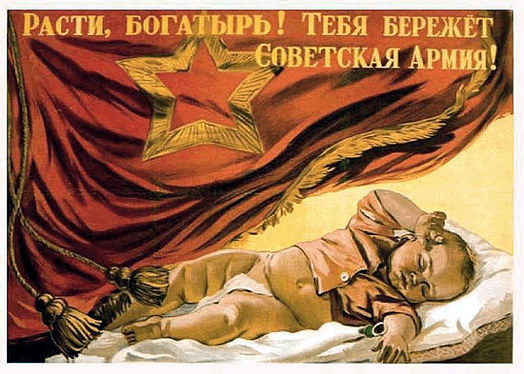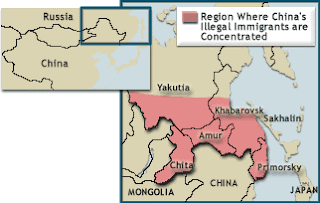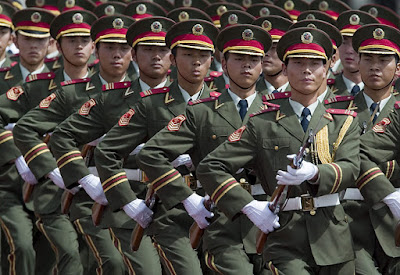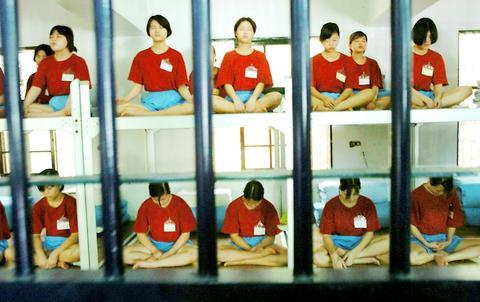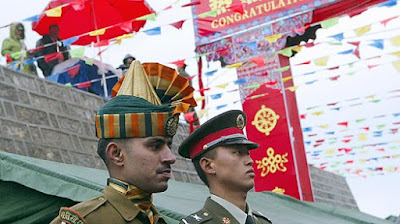[ If there were only one religion in England there would be danger of despotism, if there were two, they would cut each other's throats, but there are thirty, and they live in peace and happiness ] ----- Voltaire (1694-1778) French writer and historian
Across Europe, politicians have been questioning multiculturalism and urging more assimilation policies. The result has been greater emphasis on civic integration, linking of family reunification to integration policy and new rhetorical emphasis on loyalty, integration and commitment to European values.
Multiculturalism means different things to different people:
-- As a value. Relativists feel that all cultures are of equal value and it is impossible to reject particular aspects of cultures as unacceptable. This understanding of multiculturalism is shared by the ideological extremes.
-- As aid to integration. This is the version of multiculturalism traditionally adopted in the Netherlands, though it is now being rolled back. It holds that migrants best integrate through their own language and culture rather than that of the receiving state.
-- "Inclusive" multiculturalism. A third concept holds that migrants may maintain those aspects of their culture that do not violate the law or basic values of the receiving country. It is widely espoused in the United Kingdom and Canada.
There has been a recent change in tone in Europe concerning migrants' commitment to Europe's liberal values, with a new emphasis on integration. These developments have been accompanied by a change in government approaches to multiculturalism:
-- United Kingdom. A U.S.-style citizenship ceremony was introduced in 2004; from 2005, naturalizing migrants have had to pass language and citizenship tests.
-- France. In 2004, a ban was imposed on the wearing of Muslim hijab in school. Policymakers also adopted a "social integration contract."
-- Germany. The government provides for 600 hours of language training and 30 hours of civics instruction for migrants. Head scarves have been banned for teachers in six German states. Berlin is currently debating new naturalization tests.
-- Netherlands. Policymakers have explicitly embraced integration as a policy aim. Both new and settled immigrants are now required to pass an integration test. Rules on family reunification were also tightened.
-- Denmark. All new migrants attend obligatory civics and language classes. Their family members must wait three years to enter the country and must pass an "attachment test."
-- Sweden. The new integration minister is proposing a ban on veils for girls under 15; examination of young girls to detect signs of genital mutilation; an end to arranged marriages; and a ban on funding for religious schools.
-- United Kingdom. A U.S.-style citizenship ceremony was introduced in 2004; from 2005, naturalizing migrants have had to pass language and citizenship tests.
-- France. In 2004, a ban was imposed on the wearing of Muslim hijab in school. Policymakers also adopted a "social integration contract."
-- Germany. The government provides for 600 hours of language training and 30 hours of civics instruction for migrants. Head scarves have been banned for teachers in six German states. Berlin is currently debating new naturalization tests.
-- Netherlands. Policymakers have explicitly embraced integration as a policy aim. Both new and settled immigrants are now required to pass an integration test. Rules on family reunification were also tightened.
-- Denmark. All new migrants attend obligatory civics and language classes. Their family members must wait three years to enter the country and must pass an "attachment test."
-- Sweden. The new integration minister is proposing a ban on veils for girls under 15; examination of young girls to detect signs of genital mutilation; an end to arranged marriages; and a ban on funding for religious schools.
The far right in Europe has enjoyed a renaissance over the past 30 years, driven by resentment of the growing powers of the European Union and by rejection of the "multiculturalism" that has accompanied rapid immigration from the developing world.
Political parties opposing immigration and integration have done well in elections in recent years -- and beyond them, neo-fascist and "national socialist" groups have become well-established across the continent, including in Germany, Belgium, the Netherlands, Italy, Scandinavia, Hungary and the United Kingdom.
Most of those belonging to such groups would not contemplate the sort of carnage that occurred in Norway on Friday, but they would probably sympathize with what appears to have been the manifesto of the alleged assailant, Anders Behring Breivik.
Breivik claimed that "cultural Marxism" had morally degraded Europe, and purportedly wrote: "You cannot defeat Islamisation or halt/reverse the Islamic colonization of Western Europe without first removing the political doctrines manifested through multiculturalism/cultural Marxism."
Elsewhere he said: "One of the most widespread manifestations of the craziness of our world is multiculturalism."
There are plenty of white supremacists who subscribe to such views on websites like stormfront.org, whose motto is "White Pride Worldwide." On the site's discussion forums, one thread entitled "Scandinavia Struggles Against Multiculturalism" warns that "a united Europe could become a strong wall against Islamic 'cultural' invasion, but instead Europe has become a gateway for Islam.
" The thread, which has been active for several years, contains reports of alleged rapes by immigrants, warns about the low birth rate of native-born Scandinavians and links to videos of far-right protests.
Political parties opposing immigration and integration have done well in elections in recent years -- and beyond them, neo-fascist and "national socialist" groups have become well-established across the continent, including in Germany, Belgium, the Netherlands, Italy, Scandinavia, Hungary and the United Kingdom.
Most of those belonging to such groups would not contemplate the sort of carnage that occurred in Norway on Friday, but they would probably sympathize with what appears to have been the manifesto of the alleged assailant, Anders Behring Breivik.
Breivik claimed that "cultural Marxism" had morally degraded Europe, and purportedly wrote: "You cannot defeat Islamisation or halt/reverse the Islamic colonization of Western Europe without first removing the political doctrines manifested through multiculturalism/cultural Marxism."
Elsewhere he said: "One of the most widespread manifestations of the craziness of our world is multiculturalism."
There are plenty of white supremacists who subscribe to such views on websites like stormfront.org, whose motto is "White Pride Worldwide." On the site's discussion forums, one thread entitled "Scandinavia Struggles Against Multiculturalism" warns that "a united Europe could become a strong wall against Islamic 'cultural' invasion, but instead Europe has become a gateway for Islam.
" The thread, which has been active for several years, contains reports of alleged rapes by immigrants, warns about the low birth rate of native-born Scandinavians and links to videos of far-right protests.
Another thread is titled: "Please Nordic people, keep white Scandinavia." And the day before Friday's attack, one forum participant wrote: "Norway must wake up and deport non-whites."
In his own writings, the alleged Norwegian bomber appears to have complained about the "Muslim ghettofication process'" in Oslo -- a term also used by the far right in Denmark.
While these trends are most pronounced in Europe, they are also occurring elsewhere. For example, in Australia, an official policy of multiculturalism was abandoned in the 1990s.
In his own writings, the alleged Norwegian bomber appears to have complained about the "Muslim ghettofication process'" in Oslo -- a term also used by the far right in Denmark.
While these trends are most pronounced in Europe, they are also occurring elsewhere. For example, in Australia, an official policy of multiculturalism was abandoned in the 1990s.
By contrast, multiculturalism has failed to come under serious pressure in Canada. The reason for this has to do with identity: Multiculturalism in Canada is entrenched in the constitution and is viewed by Canadians as a fundamental basis for differentiating itself from the putatively assimilationist United States.Furthermore, the United States, Canada and Australia have not had the same experience of socio-economic failure among ethnic minority communities that has been seen in Europe, due in part to the points system used in Australia and Canada to ensure that migrants have high educational levels. These countries thus face neither the need nor the demand for increased attention to civic integration.
Both the rejection of multiculturalism as a substantive integration policy and the turn toward civic integration in Europe pre-dated the terrorist attacks in the United States, Madrid and London.
They are largely a reaction to socio-economic failure among ethnic minority communities. The policies this change of mind engendered are likely to remain. The rhetorical shift is more likely to be a contingent feature of integration politics. It will depend on whether Islamic extremism continues.
Both the rejection of multiculturalism as a substantive integration policy and the turn toward civic integration in Europe pre-dated the terrorist attacks in the United States, Madrid and London.
They are largely a reaction to socio-economic failure among ethnic minority communities. The policies this change of mind engendered are likely to remain. The rhetorical shift is more likely to be a contingent feature of integration politics. It will depend on whether Islamic extremism continues.
Yet there are limits to retrenchment as far as multiculturalism is concerned. One of its core of ideas--that individuals are free to retain their cultural attachments so long as they do not interfere with their integration into society--remains. More important, some rights that might be thought of as "multicultural"--the right to practice one's religion, to bring one's family members together, to join religious and cultural associations--are individual rights that are basic to liberal societies.
The turn from multiculturalism in Europe is apparent in the realms of both policy and rhetoric. While the new interest in integrationist policies in Europe reflects the economic and educational failure of Europe's ethnic minority communities, the rhetorical shift against multiculturalism reflects the rise in Islamic extremism. These shifts are likely to be permanent. However, they do not amount to a wholesale rejection of all aspects of multiculturalism.
The turn from multiculturalism in Europe is apparent in the realms of both policy and rhetoric. While the new interest in integrationist policies in Europe reflects the economic and educational failure of Europe's ethnic minority communities, the rhetorical shift against multiculturalism reflects the rise in Islamic extremism. These shifts are likely to be permanent. However, they do not amount to a wholesale rejection of all aspects of multiculturalism.
Further Reading:
How Multiculturalism Killed Europe
Multiculturalism and the Dynamics of Modern Civilization
Multiculturalism in World History
BBC Article : Germans argue over integration












